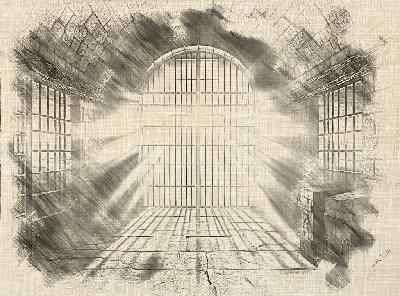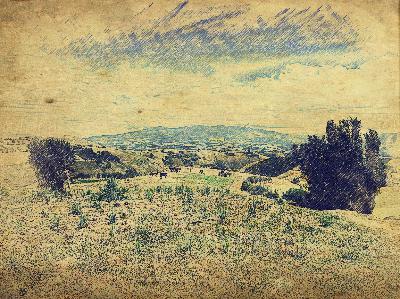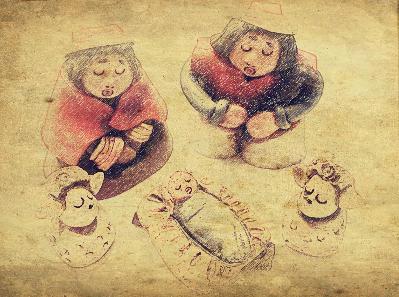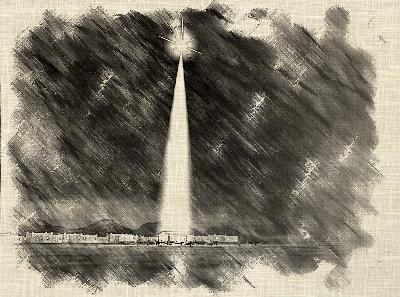Understanding God’s Bewildering Sacrifice
Description
The Baffling Truth: A Love Beyond Comprehension
In the hushed corners of our hearts, where the divine whispers echo through the chambers of our souls, we encounter a truth so profound, so utterly bewildering, that it threatens to shatter the very foundations of our understanding. This truth, captured with exquisite poignancy in Charles Wesley’s timeless hymn “And Can It Be,” is the same truth that must have stirred the depths of Mary’s heart as she cradled the infant Jesus in her arms. It is a truth that every believer must eventually confront, a reality so overwhelming that it defies the boundaries of human comprehension: He died for each one of us.
As we stand before this monumental declaration, we find ourselves echoing the words of the hymn’s opening lines:
“And can it be that I should gain
An int’rest in the Savior’s blood?
Died He for me, who caused His pain?
For me, who Him to death pursued?”
These words, penned by Charles Wesley in 1738, resonate with a raw vulnerability that strips away our pretenses and lays bare the astonishing nature of God’s love. They invite us to pause, to breathe deeply, and to allow the weight of this truth to settle upon our hearts like dew on morning grass.
The Paradox of Divine Love: Amazing and Bewildering
The refrain of Wesley’s hymn captures the essence of this paradox:
“Amazing love! how can it be
That Thou, my God, should die for me!”
Here, we encounter the heart of the Gospel, a love so pure, so potent, that it defies logic and shatters our earthly understanding. It is a love that the apostle Paul describes as surpassing knowledge (Ephesians 3:19 ), a love that is higher than the heavens, deeper than the sea, wider than the universe itself.
Yet, how often do we, in our human frailty, diminish this love? How frequently do we treat it as common or expected, forgetting the magnitude of the sacrifice it represents? If we truly comprehend the depth of God’s love, how can our lives remain unchanged?
The Mystery of the Incarnation: The Immortal Dies
In the second verse, Wesley grapples with the profound mystery of the Incarnation:
“‘Tis mystery all! Th’Immortal dies!
Who can explore His strange design?
In vain the firstborn seraph tries
To sound the depths of love divine!”
Here, we confront the paradox that lies at the heart of Christian faith: the Immortal becomes mortal, the Infinite confines Himself to finitude, the Creator submits to His creation. This is the mystery that the apostle Paul speaks of in 1 Timothy 3:16 , “Great indeed, we confess, is the mystery of godliness: He was manifested in the flesh.”
The magnitude of this truth is such that even the highest orders of celestial beings, the “firstborn seraph,” cannot fully comprehend it. How much more, then, should we approach this mystery with humility and awe? As we contemplate the depths of divine love, we are reminded of our own limitations and the vastness of God’s wisdom and knowledge.
The Descent of Deity: Emptied of All But Love
The third verse of the hymn paints a vivid picture of Christ’s descent from glory:
“He left His Father’s throne above,
So free, so infinite His grace;
Emptied Himself of all but love,
And bled for Adam’s helpless race;”
These lines echo the beautiful passage in Philippians 2:6-8, where Paul describes how Christ, “being in very nature God, did not consider equality with God something to be used to his own advantage; rather, he made himself nothing by taking the very nature of a servant, being made in human likeness. And being found in appearance as a man, he humbled himself by becoming obedient to death— even death on a cross!”
Wesley’s portrayal of Christ emptying Himself of all but love is a profound theological statement. It speaks to the kenosis, the self-emptying of Christ, not as a diminishment of His divine nature, but as the fullest expression of it. For in this act of supreme humility and sacrifice, we see the very essence of God’s character revealed.
The Awakening of the Soul: From Darkness to Light
The fourth verse of “And Can It Be” describes the transformative power of God’s grace in the believer’s life:
“Long my imprisoned spirit lay
Fast bound in sin and nature’s night;
Thine eye diffused a quick’ning ray,
I woke, the dungeon flamed with light;
My chains fell off, my heart was free;
I rose, went forth and followed Thee.”
Here, Wesley draws on the imagery of imprisonment and liberation, darkness and light, to illustrate the radical change that occurs when a soul encounters the living Christ. This imagery is reminiscent of Peter’s miraculous release from prison in Acts 12, where chains fall off and iron gates open of their own accord.
But more than a mere physical liberation, Wesley is describing a spiritual awakening, a resurrection of the soul from the death of sin to the life of righteousness. It is the fulfillment of Ezekiel’s prophecy: “I will give you a new heart and put a new spirit in you; I will remove from you your heart of stone and give you a heart of flesh” (Ezekiel 36:26 ).
The Assurance of Faith: No Condemnation
The final verse of the hymn speaks to the assurance that comes with faith in Christ:
“No condemnation now I dread;
Jesus, and all in Him is mine!
Alive in Him, my living Head,
And clothed in righteousness divine,
Bold I approach th’eternal throne,
And claim the crown, through Christ my own.”
These lines resonate with the triumphant declaration of Paul in Romans 8:1, “Therefore, there is now no condemnation for those who are in Christ Jesus.” It is a statement of profound confidence, not in our own righteousness, but in the righteousness of Christ that has been imputed to us.
The imagery of being “clothed in righteousness divine” echoes Isaiah 61:10 , “I delight greatly in the Lord; my soul rejoices in my God. For he has clothed me with garments of salvation and arrayed me in a robe of his righteousness.” It speaks to the complete transformation of our standing before God, from condemned sinners to beloved children.
The Continuing Impact: Wesley’s Legacy of Faith
Charles Wesley, along with his brother John, left an indelible mark on the landscape of Christian hymnody and theology. Their emphasis on personal faith, experiential religion, and the transformative power of God’s grace continues to shape the spiritual lives of believers around the world.
John Wesley, reflecting on the nature of faith, wrote in his sermon “The Scripture Way of Salvation”:
“Faith is the condition, and the only condition, of justification… It is the condition: none is justified but he that believes: without faith no man is justified. And it is the only condition: this alone is sufficient for justification. Every one that believes is justified, whatever else he has or has not.”
This understanding of faith as the sole condition for justification is beautifully captured in “And Can It Be,” particularly in the lines “Bold I approach th’eternal throne, And claim the crown, through Christ my own.” It is not our own merit that allows us to approach God’s throne, but the merit of Christ, appropriated through faith.
A Personal Reflection: Grappling with Amazing Love
As we contemplate the profound truths embedded in Wesley’s hymn, we are invited to engage in our own personal reflection. How do we respond to this “amazing love”? Do we, like Mary, ponder these things in our hearts (Luke 2:19 )? Do we allow the magnitude of God’s love to transform not just our beliefs, but our very lives?
Perhaps, in the quiet moments of our lives, we too find ourselves whispering, “And can it be?” Can it be that the God of the universe would love me so deeply, so completely? Can it be that the Immortal would die for me, a frail and fallible creature?
These questions are not meant to instill doubt, but to awaken wonder. They are invitations to dive deeper into the ocean of God’s love, to explore its vast expanses and hidden depths. For in grappling with these questions, we come face to face with the very heart of the Gospel.
The Challenge of Faith: Living in Light of Amazing Love
The truths expressed in “And Can It Be” are not meant to be merely intellectual assents or emotional experiences. They are calls to action, invitations to live our lives in light of this amazing love. As John Wesley famously said, “Faith working by love is the length and breadth and depth and height of Christian perfection.”
How, then, do we live in response to this love? Perhaps it begins with gratitude, with hearts overflowing with thankfulness for the unmerited grace we have received. Perhaps it manifests in service, in pouring out our lives for others as Christ poured out His life for us. Perhaps it shows itself in worship, in lives lived as living sacrifices, holy and pleasing to God (Romans 12:1).
But beyond these outward expressions, living in light of God’s amazing love requires a fundamental reorientation of our hearts and minds. It calls us to see ourselves and others through the lens of God’s love, to recognize the infinite worth that God has bestowed upon each human soul. It challenges us to exte
























